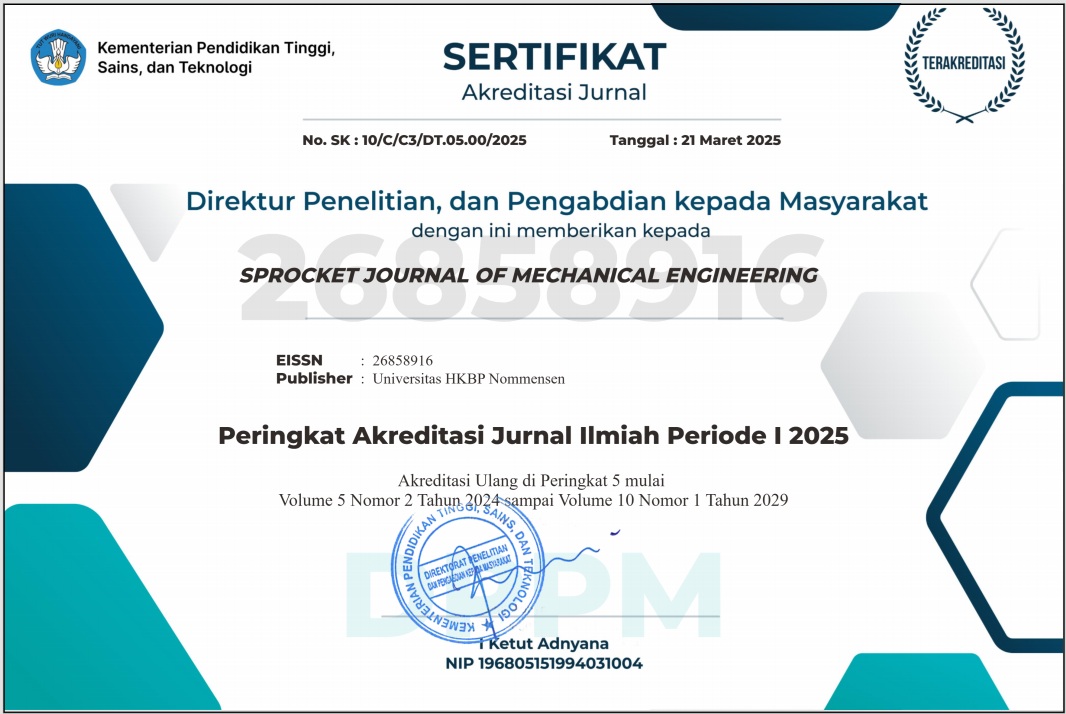Review Kapasitas Daya Dukung Dan Tinjauan Waktu Pelaksanaan Bore Pile Pada Pembangunan Jembatan Jalan Bebas Hambatan Binjai Pangkalan Brandan
Abstract
In the Sei Wampu Bridge work project, Binjai Pangkalan Brandan carried out bore pile foundation installation work at the A2 foundation point with a total of 21 piles. Review of the bearing capacity of bore pile foundations using Analysis from Meyerhof (1956) and the Converse-Labarre Formula method for the calculation of pile group efficiency. The time of completion of work based on the time schedule plan is 125 calendar days. This research conducted a review using the Critical Chain Project Management (CCPM) method to obtain time efficiency, so that the project can be carried out on time.
From the results of analysis and discussion, it was obtained that the largest foundation carrying capacity was the result of laboratory data using method C. Significant differences in results were obtained, especially laboratory data due to the correlation value used in each method. The result of calculating the bearing capacity of the foundation based on the method of Luciano Decourt (1987) using N-SPT data is 287,600.76 kN; Meyerhof's (1956) method using N-SPT data is 265,062.68 kN; a combination of Meyerhof's method (1976), Vesic's method (1977); the combination of the Vesic method (1977), the Coyle and Castello method (1981) and the results of foundation carrying capacity analysis using the All Pile program is 41,159.85 kN.
The Critical Chain Project Management method is defined as the longest chain of interrelated events, where the linkage lies in the work or resources that are interconnected with each other, by cutting 50% of the duration of the work and replacing it as a buffer. The time comparison obtained from the calculation results using the CCPM method obtained a time efficiency of 116 days with a work time difference of 7.2% or about 9 days from the existing duration of the previous 125 days, while to compare the results of the CCPM method, calculations were carried out based on realization for 97 days, where the realization results were smaller than using the CCPM method and time schedule plan.
Keywords : Bore pile, Carrying capacity, Time review
References
[2] Bowles, J.E., “Foundation Analysis and Design”, 4th ed, 1997.
[3] Das, Braja M, “Principles of Foundation Engineering”, 7th ed, 1990.
[4] Manajemen Proyek Konstruksi, Ervianto, 2005
[5] Mandak, L. (2016). Perencanaan dan Metode Pelaksanaan Pondasi Bore Pile Proyek Pembangunan
[6] Butik Gunung Langit Manado (Doctoral dissertation, Politeknik Negeri Manado)
[7] Pagehgiri, J. (2015). Analisis Penggunaan Pondasi Mini Pile Dan Pondasi Borpile Terhadap Biaya Dan Waktu Pelaksanaan Pembangunan Ruang Kelas Smpn 10 Denpasar. Extrapolasi, 8(01)
[8] Tampubolon, U. D., Rahman, T., & Haryanto, B. (2021). Evaluasi Penjadwalan Proyek Konstruksi Dengan Metode Critical Chain Project Management (CCPM)(Studi Kasus: Proyek Pembangunan Pengganti Dan Fasilitas di Yonif 661/AWL Kompi Senapan Samarinda). Teknologi Sipil, 5(1), 30-43.

This work is licensed under a Creative Commons Attribution 4.0 International License.
Penulis yang menerbitkan dengan SPROCKET JOURNAL OF MECHANICAL ENGINEERING menyetujui ketentuan berikut :
- Penulis memegang hak cipta dan memberikan jurnal hak penerbitan pertama dengan karya yang dilisensikan secara bersamaan di bawah Lisensi Internasional Creative Commons Atribusi 4.0 . yang memungkinkan orang lain untuk berbagi karya tersebut dengan pengakuan atas kepengarangan karya dan penerbitan awal dalam jurnal ini.
- Penulis dapat membuat pengaturan kontraktual tambahan yang terpisah untuk distribusi non-eksklusif atas versi jurnal yang diterbitkan dari suatu karya (misalnya, mempostingnya ke repositori institusional atau menerbitkannya dalam sebuah buku), dengan pengakuan atas penerbitan awalnya di jurnal ini.
- Penulis diizinkan dan didorong untuk mengunggah karya mereka secara daring (misalnya, di repositori institusi atau di situs web mereka) sebelum dan selama proses penyerahan, karena hal ini dapat mengarah pada pertukaran yang produktif, serta kutipan yang lebih awal dan lebih banyak dari karya yang diterbitkan (Lihat Pengaruh Akses Terbuka ).






.png)
.png)

